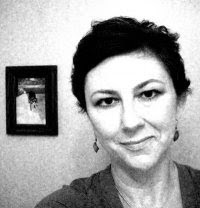
Jon Houghton is a portrait artist who lives and works in Florida and has given an annual (or semi-annual) portrait workshop with Elizabeth Ross for years. We have reached capacity on this year's workshop already!
Here is the schedule: Please note: I have corrected the dates.
Thursday night (April 24): Demo in oil, Overcash 159, Central Campus 6pm (ish).
Thursday night (April 24): Demo in oil, Overcash 159, Central Campus 6pm (ish).
Friday morning (April 25) Demo in watercolor, Overcash 159, 9:30am; afternoon...work, work, work. Remember, Elizabeth Ross reception at 5pm!
Sat. morning (April 26) work, work, work.....10am till 4pm(ish)
Here is Jon's supply list:
All: vine charcoal (soft or medium), newsprint pad (16x20 or larger)
Kneaded eraser, chamois cloth, small pencil sharpener.
If using Oils:
Palette, Turpenoid, canvases or panels (16 x 20 to 20 x 24), a medium,
rags or paper towels,
Paints: ivory black, raw sienna, yellow ochre, cadmium yellow medium, cadmium red light, alizarin crimson, burnt sienna, raw umber, burnt umber, white (any kind), sap green. This list is just the colors used in flesh tones. Bring what ever other colors you
like as well.
Brushes: I use all kinds and sizes, but they are all in good condition. Don't bring a
bunch of old dried "sticks" with clotted bristles. I'd say the minimum set would be
4 filbert bristles in sizes 2, 4, 6, 8, and a small detail brushes like a
"Monarch" no. 2, and 4, another detail brush is the W&N university series synthetic.
Pastels:
As many as you can bring. I use a set of Nu-pastels and a complete 330 stick set
of the old Grumbacher pastels, I also have a number of Rembrandts, schminckes, and
others. You simply can't do much without a variety of colors.
Watercolors:
Most watercolorists will have the paints they need. If you want to be sure, check the list of oil colors and add cerulean blue. No white necessary of course. Brushes should be good quality sables including at least one size 8 brush, (Raphael, W&N series 7, or something equivalent. For paper, I use d'Arches 140 pound cold press or something equivalent like Fabriano. For workshops I usually divide the paper into halfs or quarters ( 15 x 11). Their are many good plastic palettes available. It should have plenty of room to mix and sections for pure color.
Kneaded eraser, chamois cloth, small pencil sharpener.
If using Oils:
Palette, Turpenoid, canvases or panels (16 x 20 to 20 x 24), a medium,
rags or paper towels,
Paints: ivory black, raw sienna, yellow ochre, cadmium yellow medium, cadmium red light, alizarin crimson, burnt sienna, raw umber, burnt umber, white (any kind), sap green. This list is just the colors used in flesh tones. Bring what ever other colors you
like as well.
Brushes: I use all kinds and sizes, but they are all in good condition. Don't bring a
bunch of old dried "sticks" with clotted bristles. I'd say the minimum set would be
4 filbert bristles in sizes 2, 4, 6, 8, and a small detail brushes like a
"Monarch" no. 2, and 4, another detail brush is the W&N university series synthetic.
Pastels:
As many as you can bring. I use a set of Nu-pastels and a complete 330 stick set
of the old Grumbacher pastels, I also have a number of Rembrandts, schminckes, and
others. You simply can't do much without a variety of colors.
Watercolors:
Most watercolorists will have the paints they need. If you want to be sure, check the list of oil colors and add cerulean blue. No white necessary of course. Brushes should be good quality sables including at least one size 8 brush, (Raphael, W&N series 7, or something equivalent. For paper, I use d'Arches 140 pound cold press or something equivalent like Fabriano. For workshops I usually divide the paper into halfs or quarters ( 15 x 11). Their are many good plastic palettes available. It should have plenty of room to mix and sections for pure color.
And here are some more examples of Jon's work:












1 comment:
Not only a wonderful artist but an all around great guy. He`did a demo with the FL Portrait Society of America. His work is excellent
Post a Comment